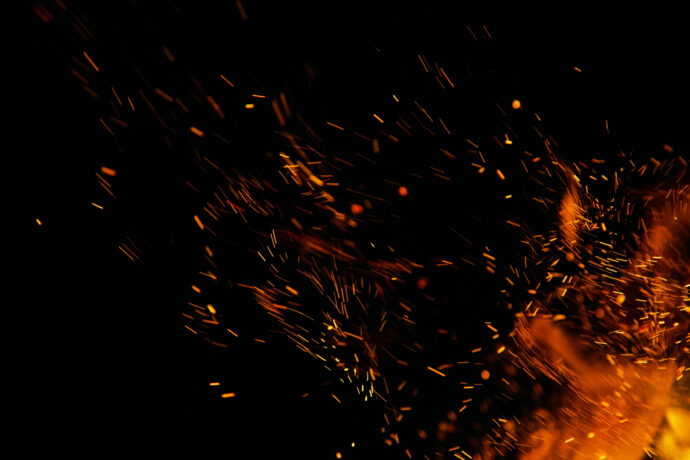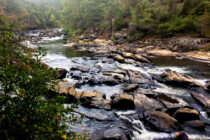As humans, we have a complicated relationship with fire. On the one hand, fire is responsible for allowing humanity to safely prepare our food and keep ourselves warm in the winter months. Fire allowed humans to craft, shape, and combine metals that allow for advances in agriculture and transportation. In fact, the technology developed from fire has impacted nearly every facet of modern life.
On the other hand, fire is also responsible for some of the most devastating national disasters in our nation’s history. Recently our country watched in horror as the small California mountain town of Paradise burned. The “Camp Fire” would eventually burn more than 153,000 acres, killing 85 people and destroying more than 18,000 buildings. In 2018 alone there were more than 64,000 wildfires that burned more than 8.6 million acres.
Fire is responsible for both the sustaining of life and the unequivocal destruction of life. It is a nearly unrivaled force in nature that brings both awe and fear. In the wake of the devastation from the most recent wildfires, scientists have been asking what is causing the increase in wildfires. While there are many contributing factors, one has been our resistance to allowing fire to do its cleansing work.
Journalist Elizabeth Shogren talks with fire ecologist Sasha Berleman about this failure: “For more than a century, people have been snuffing out fire across the West. As a result, forests, grasslands and shrub lands . . . are overgrown. ‘We have 100 years of fire suppression that has led to this huge accumulation of fuel loads, just dead and downed debris from trees and plant material in our forests, and in our woodlands,’ says Berleman. ‘As a result of that, our forests and woodlands are not healthy, and we’re getting more catastrophic fire behavior than we would otherwise.’”
It is natural for a forest to accumulate debris. Branches fall, leaves pile up, and grass and shrubs grow, live, and die—leaving behind vast amounts of fuel. Untended, these decades of neglected care can become the fuel that destroys entire cities. How similar this is for us. As we make our journey through life, we find ourselves accumulating the stuff of life—wounds from broken relationships, disappointments from failed experiments, the wear of long battles with addiction or the pain of relational disappointment—can grow wild in our hearts.
Untended, a soul sick with anger or lust or resentment eventually finds itself sick to the point of destructive behavior. What began as a childhood wound from a parent may become a self-destructive quest to find intimacy through sex. What began as a drive to succeed may become an obsessive need to win at all costs, no matter the relational impact. Like an untended forest, we cannot ignore our hurt and baggage forever. The accumulation of our pain will eventually catch up to us.
Lent is an opportunity, and call, for us to approach and deal with our pain in a healthy way. Like a controlled burn, Lent offers us the opportunity to ask ourselves, “What is dead that resides in me? What hurt, resentment, or addiction has accumulated in my heart? Where are the untended spaces in my soul? What might I give up in order to find freedom and healing?”
This work, under the careful direction of the Holy Spirit, may come through prayer or professional counseling. It may be under the guidance of a spiritual director or the deep connection of a prayer partner. The ways the Holy Spirit can work are endless, but in order to find life, we must first be willing to submit to the fire.
This truth is powerfully demonstrated by the sequoia tree. One of the most staggeringly beautiful residents of California, sequoia trees hold the honor of being the tallest (upwards of 275 feet) and largest (2.7 million pounds) living things on earth. To visit a sequoia forest is to be reminded of just how small we are. However, as awesome as they may be (and they are awesome), sequoias are in need of constant help to remain healthy and to reproduce.
The National Park Service helps us understand why: “Sequoias rely on fire to release most seeds from their cones, to expose bare mineral soil in which seedlings can take root, to recycle nutrients into the soil, and to open holes in the forest canopy through which sunlight can reach young seedlings. Sequoias also need fire to reduce competition from [other] species. . . . A natural fire cycle thins . . . competing species and provides suitable conditions for sequoia growth.”
Lent is a patient and persistent reminder that we must deal with death in order that we might experience life.
What a fitting image! In a world that is constantly competing for our hearts, trying to steal that which brings us life, the fires of Lent, through surrender and submission, clear and replenish, heal and restore. Lent is a patient and persistent reminder that we must deal with death in order that we might experience life.
Scholar N.T. Wright says it perfectly: “Lent is a time for discipline, for confession, for honesty, not because God is mean or fault-finding or finger-pointing but because he wants us to know the joy of being cleaned out, ready for all the good things he now has in store.”








0 Comments